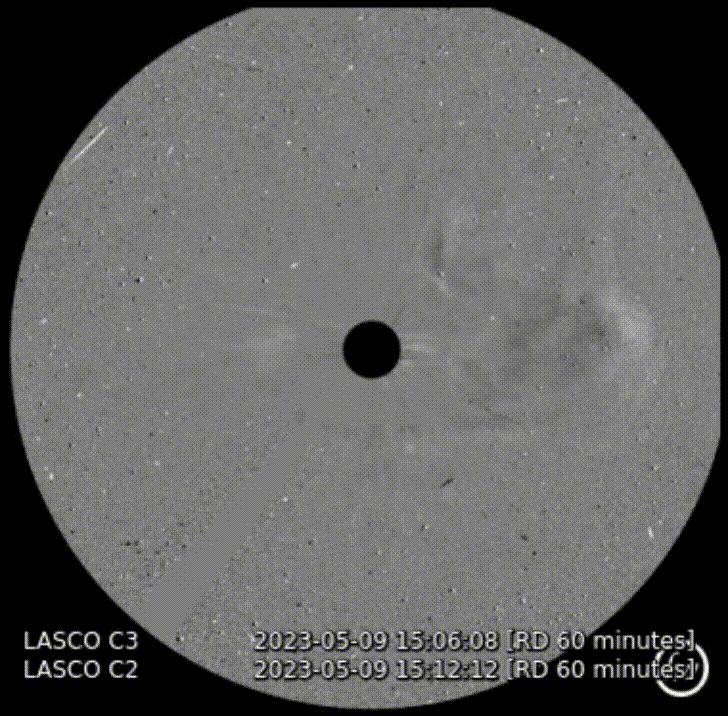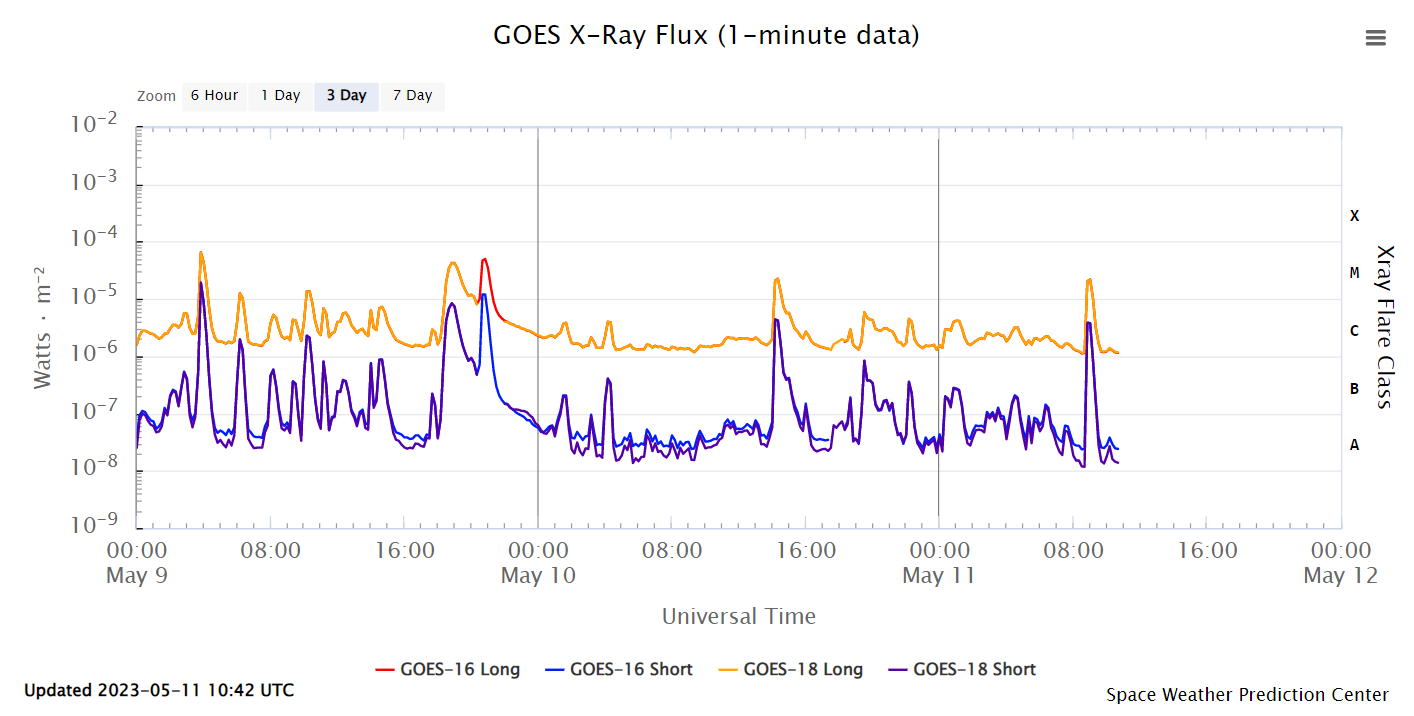Space Weather Alert - 11th May 2023
What Has Happened?
A full-halo Coronal mass ejection (CME), associated with an M-class solar flare, lifted from the Sun at approximately 19:12 UT on the 9th May. This is expected to arrive late on the 11th May or early on the 12th leading to likely enhanced geomagnetic activity.
Solar wind speeds remain slightly elevated after a CME arrival on 9th May which left the Sun on the 7th. Therefore, with this latest CME arrival, significant STORM periods are anticipated.
Assuming clear, dark skies, there is a greater chance of seeing the aurora on the 11th May through to the 12th May. Those in Scotland, northern England and Northern Ireland have a better chance if the weather is favourable on those nights.
Sign-up to receive Geomagnetic Disturbance Alert emails.
Follow us on Twitter:
Follow @BGSauroraAlert for more occasional aurora alerts.
Follow @BGSspaceWeather for daily space weather forecasts.
Glossary
- BGS
- The British Geological Survey is a geoscience research centre that is part of UK Research and Innovation (UKRI) and affiliated to the Natural Environment Research Council (NERC).
- CME or Coronal Mass Ejection
- The eruption of a portion of the outer atmosphere of the Sun into space, caused by rapid changes in its magnetic field. Often occurs along with a solar flare.
- Solar Wind
- The ever-present expansion of the Sun’s hot outer atmosphere into the solar system, which carries space weather within it.
- Solar Flare
- Energy released by the explosive reorganisation of magnetic fields within the Sun's atmosphere.



